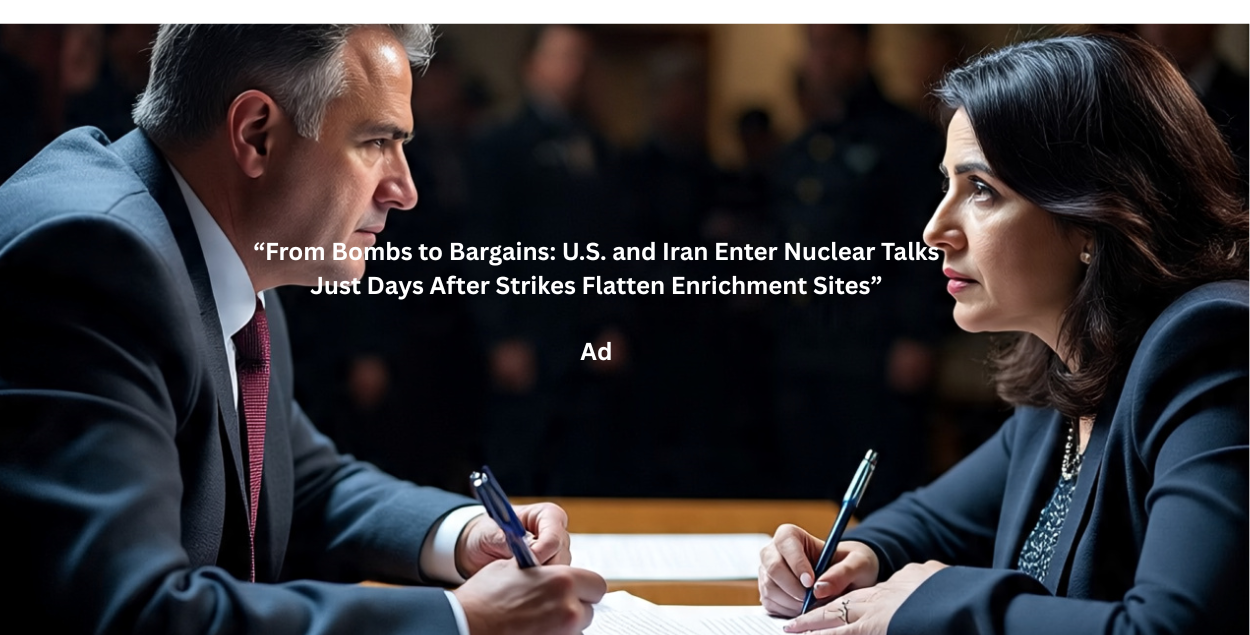FnF News
🇺🇸 FNF News | U.S.–Iran Crisis | Nuclear Diplomacy & Military Strategy
Published: June 25, 2025
By: Khadija Khan, Chief Foreign Affairs Correspondent
Talks Under the Rubble: U.S. and Iran Begin Nuclear Negotiations Just Days After Devastating Airstrikes
WASHINGTON, D.C. — In a stunning turnaround that few predicted, the United States and Iran are now re-engaging in nuclear negotiations, even as the dust still settles from last week’s U.S. bombing campaign on Iranian enrichment sites. After ballistic missiles, ceasefire breaches, and global condemnation, what follows may be the most unlikely twist yet in this volatile saga: a table, not a battlefield.
According to administration sources, the next round of U.S.–Iran talks is scheduled for next week in Doha, brokered by Qatar and observed by European Union officials. The goal: to limit Iran’s uranium enrichment, bring the country back into compliance with oversight standards, and possibly restore certain oil trade waivers if terms are met.
Diplomacy by Force?
The shift comes just days after Operation Midnight Hammer, where U.S. stealth bombers targeted nuclear bunkers at Natanz, Fordow, and Isfahan. The Pentagon insists the strikes were successful, but leaked DIA reports suggest Iran’s program may only be delayed—by months, not years.
President Trump, speaking at the NATO summit in The Hague, claimed the bombing “buried Iran’s ambitions under thirty stories of concrete.” Yet his team now says “encouraging signals” have emerged from Tehran.
Critics say it’s an intentional contradiction: bludgeon, then bargain.
Tehran’s Position
Iran’s government, reeling from the strikes, has suspended cooperation with the IAEA and accelerated domestic enrichment. Still, Foreign Minister Hossein Amir-Abdollahian confirmed that “the Islamic Republic is open to realistic dialogue—if sovereignty is respected.”
Despite public fury, internal sources in Iran suggest the regime is seeking sanction relief and strategic pause before elections in 2026.
Ceasefire with Cracks
The so-called ceasefire between Iran and Israel, announced by Trump earlier this week, has shown signs of strain:
- Israeli airstrikes reportedly hit IRGC-linked depots in southern Syria.
- Iran responded with drone flights and cyber disruptions.
- Sirens sounded in northern Israel, and rocket fire was reported in disputed zones near the Golan Heights.
The ceasefire, while still “active” on paper, functions more like a soft pause between precision strikes.
NATO Aligns, Eyes China
While Trump pushes for de-escalation with Iran, he used the NATO summit to announce a major realignment:
- NATO allies will now raise military spending to 5% of GDP by 2035.
- The U.S. will restructure its military presence in Europe and the Gulf, reinforcing maritime corridors and aerial strike capacity.
- Trump hinted at sanction relief for Chinese oil brokers if Iran pulls back enrichment, signaling a multi-front bargaining strategy.
What’s at Stake
- If diplomacy fails, Iran could continue rebuilding its enrichment program without UN oversight.
- If diplomacy succeeds, Iran may regain partial access to oil markets and frozen financial assets—but under tight conditions.
- Regional players like Israel, the UAE, and Saudi Arabia remain skeptical of any U.S.-led peace framework that softens Tehran’s hand.
Global Reactions
- Russia and China publicly supported the talks but accused the U.S. of destabilizing Iran with “brute force diplomacy.”
- Germany, France, and the UK offered observers and potential financial guarantees if Iran complies.
- Israel has not commented, but sources suggest Netanyahu’s cabinet is deeply divided on whether to support or sabotage the process.

